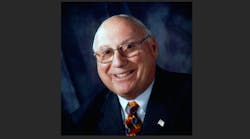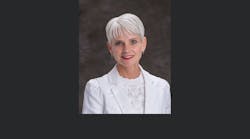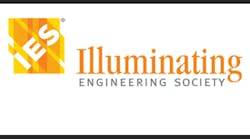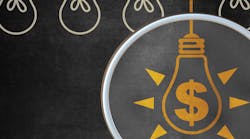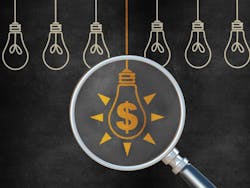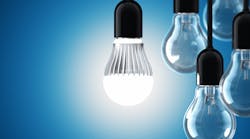The trends in the lighting industry of declining up-front prices for lighting equipment, along with constant advances in technological capabilities, create a pretty good “natural” payback on replacing older technologies with LED lighting, based on the energy savings alone. LEDs have become common in mass-market retail aisles, further raising awareness among consumers and other end-user groups.
In this setting rebate programs to incentivize the transition to modern lighting systems may be expected to decline, having played an important role in the market transformation they were designed to support. Indeed, some lighting manufacturers tell us that they have been de-emphasizing rebates as part of their sales and marketing approach, instead making the case on the energy savings and improved technology such as expanded control capabilities, and adding any available rebates as icing on the cake to speed up the payback.
However, there are few if any signs that energy efficieny programs offered by utilities, government agencies and other organizations are backing off lighting rebates.
(fatido/iStock/ Getty Images Plus)
According to BriteSwitch LLC, a firm based in Princeton, NJ, that tracks commercial lighting rebates and helps distributors, contractors, energy service companies (ESCOs) and manufacturers selling direct handle the rebate process, rebate offerings throughout the United States have held remarkably steady.
A report the firm released in February found that 73% of U.S. zip codes have a commercial lighting rebate available. That figure represents a slight dip from the previous year in overall geographic rebate coverage, says Leendert Enthoven, owner of BriteSwitch, a dip mostly due to the discontinuation of a large rebate program offered by the Tennessee Valley Authority (TVA) in the Southeast, particularly in Tennessee, and the sun-setting of a large program by Dominion Energy in Virginia that is expected to be replaced this summer.
Looking at rebates on the basis of individual lighting technologies, the picture is even better.
“When we look at all the LED technology categories — fixtures, screw-in lamps, tubular LEDs (TLEDs) and so on — the average for all those areas together is actually up,” Enthoven says. “This was a little bit of a surprise. This happened particularly in the fixture category. That’s good news for the industry and end users.”
Instead of declining as the market transformation takes hold, rebate programs appear to be shifting toward greater emphasis on the quality and capabilities of the lighting systems. This shift is about to get significant support from new solid-state lighting technical requirements under development by the non-profit DesignLights Consortium (DLC), based in Medford, MA.
DLC is the keeper of one of the two main lists of commercial lighting equipment on which energy efficiency programs base their rebates, the other being the U.S. Department of Energy’s Energy Star program. Many, if not most, of the rebate programs require that new products being installed must be from the DLC’s Qualified Products List (QPL) or Energy Star. Even beyond rebates, DLC or Energy Star listing requirements show up frequently in commercial lighting specifications generally.
As such, the choices made by the consortium’s members regarding the parameters required for inclusion in the DLC QPL have tremendous influence on the shape of rebate programs.
In January, DLC released the first draft of the next iteration of its Solid-State Lighting (SSL) Technical Requirements, version 5.0. The draft is more conceptual than technical at this point, and it reflects a shift to incorporate several metrics related more to lighting quality and performance rather than simple energy efficiency.
The new draft does ratchet up energy-efficiency requirements with efficacy increases of about 10% across the board, with some product categories seeing essentially no required efficacy increase and others a much larger increase, based primarily on a 2017 DOE study of energy savings potential and market saturation by product category. Version 5.0 also looks to factors such as controllability to drive additional efficiency improvements.
Utilities offer rebates as a way of lowering demand on their systems and it’s hard for them to monetize anything but energy saved. However much of the push for better quality lighting is coming from the utilities, particularly those with large custom lighting projects where the utility is closely involved with the customer, says Tina Halfpenny, executive director of DLC.
“They’re seeing lots of problems, particularly with glare,” Halfpenny says. “They’re seeing a lot of products coming in that are on the DLC list, but in order to meet the efficacy requirements they’re doing things like ripping off the lens from the fixture. So, there’s been some push-back on the quality of the light as we continue to push on efficacy. Between color quality, glare and light distribution, these are all things that are affected, the higher the lumens-per-Watt (lm/W) goes.”
This realization about the need for better lighting quality to advance market uptake makes longtime lighting distributors such a Randy Johnson confident that rebates will continue.
“As product prices become more and more competitive we will see less incentive for a given solution or product, but I think utilities are always trying to reemphasize the focus in the marketplace,” Johnson says. “The whole concept, when rebates first came out, was market transformation. They’re trying to encourage customers to embrace more technologies and they help subsidize some of the up-front cost to make it more palatable to do so.”
Johnson, lighting solutions manager for Werner Electric Supply and former owner of U.S. Lamp, who holds one of two distributor seats on the DLC’s Industry Advisory Committee, says the emphasis on factors affecting the quality of lighting is aimed at broader industry support.
“The challenge with utilities is that their yardstick is energy efficiency, so other things that go into quality, whether it’s color rendition or reduced flicker or color quality, circadian lighting for health, all those things are deemed to be good benefits but the utility can’t really monetize that in any way,” he says. With its new draft technical requirements, DLC is trying to generate a dialogue to determine the best direction for all the industry segments involved. “DLC is trying to find a common ground that makes sense for all the players.”
For distributors, rebates continue to provide an opportunity to demonstrate that they’re looking out for a customer’s best interests. Lighting energy-efficiency rebates have been around for a very long time, beginning in the pre-LED days to encourage customers to change from T12 fluorescent lighting to more efficient T8s and to move from electromagnetic to electronic ballasts. But utilities continue to struggle getting the word out.
Mike Connors, CEO of Bulbs.com, Worcester, MA, an online commercial lighting distributor that has made its numerous utility rebate partnerships a differentiator in the marketplace, says it’s surprisingly common for customers to be completely unaware of rebates in their local markets.
“It’s interesting to see how few customers are even aware of the incentives available to them,” Connors says. “Not a day goes by when we don’t land a piece of business by telling a facilities person who’s wanting replacement lamps and in some cases hasn’t begun to make the transition to LED, that all the products required are covered by utility incentives.”
The number of lighting energy-efficiency programs that include “midstream” rebates that are paid to the distributor, allowing the distributor to give the customer a discount up front, has been growing since they came on the scene a few years ago, but are still a small fraction of rebates. BriteSwitch estimates that midstream programs affect 5% of the lamp rebates in the market and 2% of fixture rebates.
Midstream programs improve efficiencies for the utility by reducing the number of end users the utility has to work with, and improves cash flow for end users who get the rebate up front and don’t have to go through the process or forget to file the paperwork. Nonetheless midstream programs place a significant burden on distributors who have to process each rebate individually and associate it with a particular sale rather than batching them and receiving one combined check.
Other trends highlighted by BriteSwitch include a shift from rebates for replacement lamps to rebates for fixtures, and more widespread offerings of rebates for networked lighting controls, a category that has grown rapidly since DLC introduced its Networked Lighting Control System Technical Requirements.
“While traditional control rebates in general have been remarkably stable over the past 10 years, rebates for networked lighting controls have been mostly a mishmash of different approaches by the various utilities,” said a trend report on the company’s website. “Some clear trends have started to emerge though in the 2019 rebate programs that have been published so far. At this moment, 75% of the prescriptive rebates for networked lighting control are per fixture, meaning that the rebate is a set dollar amount per fixture connected to a networked lighting control system. Usually, the fixture must be on the DLC list and the control must be on the DLC Networked Lighting Controls list. For rebate programs that are not based on a fixture type, the rebate amount would typically be determined by watts controlled, kWh saved, square feet of the project or a percentage of project cost.”
Enthoven of BriteSwitch also points to regional variations in lighting rebates, with the Northeast hosting many innovative programs while the Southeast has long seen the least rebates and continues to do so. California, which for many years has been seen as an innovator in rebate programs, is actually seeing a decline in rebates due to recent legislation mandating installations that previously were incentivized.
Distributors need to keep an eye on changes in the rebate landscape to avoid being caught-out by those changes — something Halfpenny saw after the previous revision to the SSL technical requirements. Utilities and manufacturers knew early on that certain products would be de-listed, but no one told the distributors.
“One thing we are concerned about: When we did the last specification in 2017 and moved to version 4.0, we caught a lot of distributors by surprise,” Halfpenny says. “We de-listed about a third of the qualified products, and people were left with stock that was no longer DLC-qualified. There was a nine-month grace period when we changed the specs, and the manufacturers were alerted but distributors weren’t getting those communications. So we need to get the word out that 5.0 is coming, and there will be changes.”
Sidebar: Mistakes Distributors Can Avoid
• Electrical distributors play a key role in helping customers take advantage of lighting rebates, but our sources pointed out some areas where distributors can often do better.
• Not using rebates as a way to demonstrate that you’re looking out for the customer.
• Not getting the project pre-approved for the rebate.
• Not checking DLC and Energy Star lists for the specific product to be installed.
• Not preparing the customer for audits.
• Not following through to make sure the paperwork is filed and the rebate is received.
• Not being aware of changes in DLC listings as technical requirements are updated.



